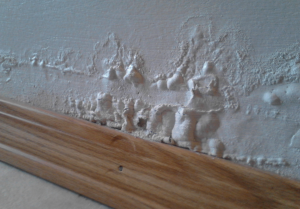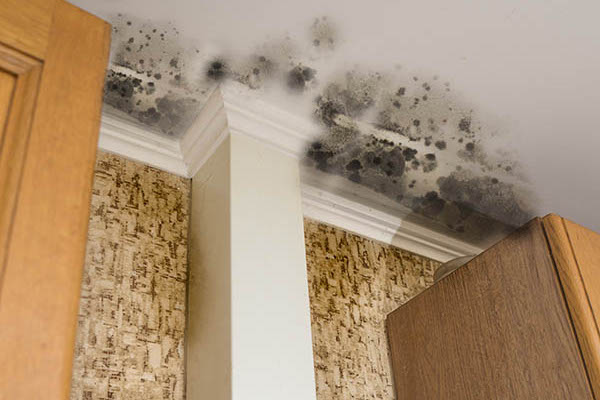Stains from Water on Wall Surfaces: Checking and Repairing Processes
Stains from Water on Wall Surfaces: Checking and Repairing Processes
Blog Article
Just how do you really feel on the subject of How to Find and Repair Water Leaking in the Wall?

Water spots on wall surfaces are not pleasurable to the eyes. Often it seems virtually inescapable to experience water stains on wall surfaces in homes.
Homeowners living in damp areas constantly deal with the worry of water spots on wall surfaces. With exact and all-round info on the reasons of water discolorations and punctual fixing processes, you will certainly constantly be a step in advance of such events.
3 Common Root Causes Of Water Discolorations on Wall Surfaces
Contrary to popular belief, water discolorations on wall surfaces do not always come from inadequate building materials. There are a number of sources of water spots on walls. These include:
Poor Drain
This will certainly prevent water from permeating right into the wall surfaces. This links to too much moisture that you discover on the walls of your structure.
So, the leading root cause of damp walls, in this instance, can be an inadequate drain system. It can also be because of inadequate administration of sewage pipes that go through the building.
Damp
When warm damp air meets with dry cool air, it creates water beads to form on the wall surfaces of structures. This takes place in shower rooms as well as kitchen areas when there is steam from food preparation or showers. The water droplets can tarnish the surrounding walls in these parts of your residence and also spread to other locations.
Moist or condensation affects the roof covering and wall surfaces of buildings. When the wall is damp, it creates an ideal environment for the growth of microbes and also fungi.
Pipe Leaks
A lot of residences have a network of water pipes within the walls. It constantly raises the viability of such pipes, as there is little oxygen within the wall surfaces.
Yet, a disadvantage to this is that water leakage impacts the wall surfaces of the structure and triggers extensive damages. An indication of defective pipelines is the appearance of a water discolor on the wall.
Water Spots on Wall Surface: Fixing Tips
Homeowners would typically want a quick fix when taking care of water stains. They would soon realize this is counterproductive as the water stains recur. Below are a couple of helpful tips that will certainly lead you in the fixing of water discolorations on wall surfaces:
Pro Pointer
A houseplant in your house likewise enhances its moisture. If the home is already moist, you may want to present houseplants with very little transpiration. An example of appropriate houseplants is succulents.
Conclusion
Although no person wishes to have water stains on walls in their residence, it can occur to the best people. This write-up provides you leverage, as you currently know just how to manage this accident if it does occur.
It is constantly best to recruit specialist services to aid repair the problems in your house.
Often it seems nearly unavoidable to experience water discolorations on walls in residences.
Contrary to preferred belief, water stains on wall surfaces do not always stem from bad building materials. There are numerous causes of water stains on wall surfaces. The water droplets can tarnish the surrounding walls in these components of your residence and spread to other areas.
Below are a couple of helpful tips that will lead you in the repair of water stains on walls:
CHECKING FOR WATER DAMAGE
Water damage can be costly, and it may begin before you even notice the first signs of trouble. Water damage can cause mold and mildew in your walls and floors, which can create an abundance of health concerns for your family. It can also lead to costly repairs of various appliances and general home fixtures. To avoid the pricey consequences of water damage, here are Warner Service’s top 5 places you should check:
The walls – The easiest place to spot the beginnings of water damage is on the walls and ceilings of your home. If water damage is present, there will most likely be water stains, especially around the windows and doorframes, and/or cracks in the drywall. If a stain looks unusual (discolored to brown, black or gray, raised texture), has a swollen appearance or is soft to the touch, contact a professional immediately. The pipes – To avoid water damage, consistently check the pipes in your kitchen (especially the dishwasher and ice maker), bathrooms, laundry room (specifically washing machines) and basement for corrosion, leaks and water stains. Pay special attention to where the pipes connect in your home and the location of caulking around the bathroom fixtures, including toilets, sinks, showers and tubs. Missing or loose caulking and grout could be signs of leaking water. This seepage can also quickly cause mold and rust, so double check your water heater and tank for wet spots on the floor. The floor – Water damage is very easy to spot on the floor. Look for any warping or buckling of the material, especially in the basement. If your home has wood flooring, look for bright white or dark stains. If your home has carpeting, keep it dry and clean. A damp carpet that smells of mold could cause water damage and health problems. To avoid this, consider installing floor pans under your appliances to help prevent damages from small, slow and undetected leaks. The basement and attic – If your basement or attic smells odd check for mold and mildew around the area, especially the valley where the roof meets. While you are inspecting those areas, check for wall cracks, floor stains, rust and dampness in the insulation. If you live in a colder and/or rainier climate, perform routine checks for water damage from melting snow or ice and rain. The exterior – Check the roof for damaged flashing and missing, cracked or curled shingles. There should also be no standing water anywhere outside your home. This could be caused by puddles, leaky rain gutters or hoses, poor drainage, or short gutter spouts. Invest in a sump pump system or water flow monitoring system, and perform routine maintenance on these outdoor appliances to avoid indoor water damage.

As an enthusiastic reader about , I thought sharing that piece of content was beneficial. Make sure you take the time to promote this entry if you enjoyed reading it. We love reading our article about How to Find and Repair Water Leaking in the Wall.
Get sorted, dial now! Report this page